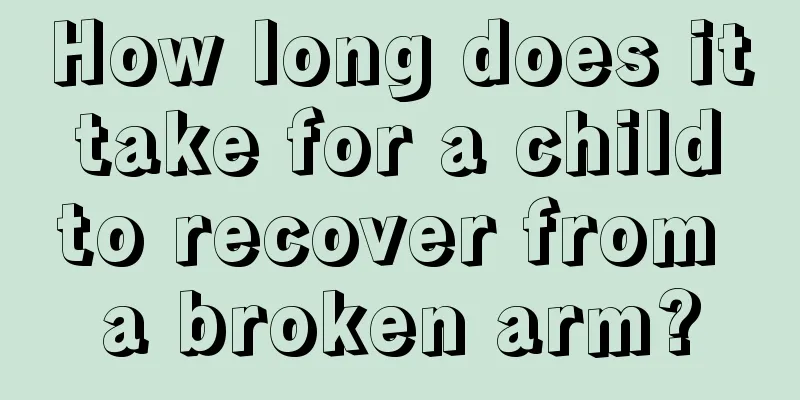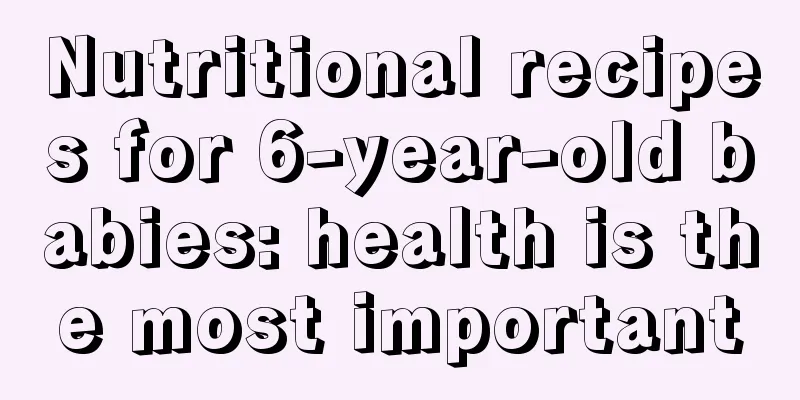Can roseola infantum rash be exposed to wind?

|
Roseola infantum is a type of rash. Once a baby suffers from roseola infantum, the first thing he will have is a fever or a high fever that won't go away. Once the high fever subsides, a rash will appear on the body. Many parents believe that roseola infantum cannot be exposed to wind, as wind may cause the baby to catch a cold or that wind may affect the onset of the rash. In fact, these are all unscientific. Roseola infantum can be exposed to wind, but the baby just needs to pay more attention to rest. Can infantile rash be exposed to wind? Young children in emergency can be exposed to the wind, and you can also give the baby a bath. You can use honeysuckle to boil water to bathe the baby, which is very effective. Let the baby rest in bed and give the baby more water. Generally, the baby will be fine in three or four days. Roseola infantum is one of the few diseases in which a baby can go out to play and be exposed to the wind if the rash appears. However, Chinese medicine believes that the baby's constitution is weak at this time, and if the baby sweats a lot, it is not recommended to go out to be exposed to the wind. Emergency treatment for children This disease is a self-limiting disease with no special treatment. It mainly relies on intensive care and symptomatic treatment. Generally, no special treatment is required, and it is mainly symptomatic treatment. In particular, patients with high fever should be given antipyretic sedatives. If the high fever persists, it is necessary to increase the supply of water and nutrition, and you can drink more boiled water, vegetable soup, fruit juice, etc. If complications such as diarrhea occur, they are also caused by this virus. When you have diarrhea, you should not consume boiled water or foods containing glucose or lactose (including milk containing lactose). You should drink thick rice soup with an appropriate amount of salt. 1. General treatment: The child should rest in bed, pay attention to isolation, avoid cross infection, drink plenty of water, give easily digestible food, and appropriately supplement vitamin BC, etc. 2. Symptomatic treatment: Physical cooling for high fever, appropriate use of antipyretic drugs for infants and young children containing "paracetamol" or "ibuprofen" (for example: Tylenol, Benadryl, Motrin, etc.), if convulsions occur, give sodium phenobarbital or chloral hydrate, and appropriate fluid replacement. In the early stage of TCM treatment, it is advisable to dispel wind and relieve exterior symptoms, while in the rash stage, it is advisable to clear away heat and cool blood. Emergency care for children 1. Babies should rest more, avoid strenuous play, and suspend physical exercise. 2. Drink more water and add appropriate amount of fruit juice. This will increase the intake of vitamins, facilitate sweating and urination, and promote the excretion of toxins. 3. During the baby's illness, he should eat easily digestible food. Babies who can already eat solid food can eat liquid or semi-liquid food at this time. But be careful to make sure it is nutritious; (it is not recommended to drink sweetened water with high sugar content, as the baby's appetite will be poor at this time and it will affect the baby's appetite); 4. Deliberately and appropriately supplement vitamin C and vitamin B. 5. The place where the baby rests should be quiet, and the air should be well circulated and kept fresh. 6. The quilt should not be too thick or too many, as this will not be conducive to heat dissipation. 7. Pay attention to the cleanliness of the baby's skin, and wipe off the sweat on the child's body frequently to prevent the baby from catching cold and preventing the baby with rash from being infected. 8. When the body temperature exceeds 39 degrees, you can wipe the child's body with warm water or 37% alcohol to prevent high fever convulsions. (Alcohol is not recommended for cooling down babies. If parents do not know the alcohol concentration, it is not recommended for older babies as it is irritating to the skin). |
<<: What to do if your baby boy has urinary tract infection
>>: What is the soft spot on the baby's head?
Recommend
What to do if your 2-month-old baby sneezes
My sister's baby is 2 months old and has been...
What's wrong with the white marks on the child's face?
As we all know, if a child has worms in his stoma...
What are the white spots on my child’s fingernails?
Children's health has always been the top con...
What are the symptoms of a child having a fever and convulsions?
Families must not let their children's health...
What to do if a child's front teeth grow crooked
The incisors can be said to be the gateway to the...
Why are baby's eyes red?
There are many parents who are particularly worri...
4 month old baby crying before going to bed
The situation of babies crying before going to be...
What to do if your child has yellow discharge from his ears
With the gradual improvement of living conditions...
What causes knee pain in children?
Many parents often hear their children complain a...
Child fell off the bed and hit his head
Many parents neglect their children, causing them...
Which department is better for treating children's hernia?
Some parents rush to the hospital to take their c...
Causes of low-grade fever in children
There are many factors to consider when children ...
How to take care of baby's nails when they fall off
Children at this age are generally more naughty, ...
How to tell if a newborn is calcium deficient?
The phenomenon of calcium deficiency in newborns ...
What to do if the baby's hands and feet are hot but the forehead is not hot
When parents find that their baby's hands and...









